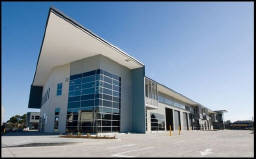



LCD Repairs
We've expanded...visit our new Laptop Repair service centre
Fast Service 48 HR
Welcome!
Laptop Rescue is renowned for its quality service and competitive prices.
Established in 2004, Laptop Rescue service centre is a fast growing business situated in the eastern suburbs of Sydney.

Whether your LCD monitor is missing blocks or lines of information, has scratched surface, defective backlight or no display function at all, Laptop Rescue can restore it to as-new performance.
Recent News:
We specialise in repairs and upgrades of all major laptop brands such as IBM Lenovo, Toshiba, Dell, HP, Compaq, Sony Vaio, Acer, Apple MacBook and other name brand laptop systems.
November 20 ,2017
Free Quote, No Fix No Fee. Call Now
November 06 ,2017
Fixed price for laptop DC Jack (Power Socket) repairs, Fast Service $220
Unit 3, 26 Wentworth Avenue Mascot NSW 2020

Paradoxically, "the green EV" could generate more carbon emissions than fossil fuels cars due to its procurement of raw materials, manufacturing, use and recycling process. Manufacturing a battery requires a lot of energy, from the mining of raw materials to the energy consumed in production. Although EVs are presented as super clean energy, consumers need to also consider the following:
· environmental impacts in the Democratic Republic of the Congo such as the dust, fumes, and the wastewater caused by cobalt mining;
· problems in Latin America such as water shortages and toxic spills from lithium mining;
· a polluted river caused by nickel mining in Russia;
· air pollution in north-eastern China.
· The battery is an expendable item and has its lifetime. The logical question here is what will be done with the tons and tons of dead batteries after they have served their purposes. According to the Financial Times’ estimation, 11 million tons of spent Li-Ion batteries will be in the market by 2025. To protect our environment from pollution and toxic waste, the battery resources need to be used in the best possible way.
· The first solution would be the battery re-use principle, where the EV batteries in "bad condition" could be used in other applications such as in households or energy backups. When the capacity of a car battery drops below 70-80 percent, they are no longer suitable for an EV but still strong enough for many other applications. The EV batteries have quite a long lifecycle, estimated up to 10 years, and by re-purposing them, this lifecycle can be prolonged even up to about 20 years.
· Battery recycling is a second solution which could be combined with the first solution. The battery is made by combining different materials inside, thus its recycling is a complex and expensive process. Lithium is a valuable material. To reclaim one ton of lithium, about 30 tons of batteries need to be recycled. However, for extracting one ton of raw lithium from a mine, about 1375 tons of soil must be excavated as well.
As mentioned above, a battery is composed of different items: the electrolyte, separator, foils, and casing which are all made from different materials. They need to be disassembled and then recycled, which makes this process quite complicated. Bolts are preferred over glue, and electronic modules and copper connectors should be simple to separate. The figure below shows the battery components and building materials.
Carbon, which is the most expensive battery component, is almost always used as the anode material. Cobalt and lithium are quite limited materials and they are interesting due to their scarcity. Nickel is highly toxic for the environment, but manganese is not as worrisome as the others mentioned.
Several battery recycling methods are already in use, such as pyrolysis, hydrothermal recycling, and direct physical recycling. These have their advantages and disadvantages. Direct and hydrothermal methods use the chemistry-specific process and require sorting the batteries by content. Direct physical recycling requires improving and adaptations, such as unpacking the cell interior and enabling efficient removal of materials for processing.
Generally, it is expected that no issues will occur with recycling the cobalt or nickel, but recycling lithium requires introducing new processes. Using the pyrolysis method is unlikely to be cost effective. Hydrothermal and direct physical methods could help solve this issue, however, upgrading the methods is required.
The main issue with battery recycling is that it is currently expensive. Basically, it is cheaper to buy new material then recycle the used one. The environmental issues are definitely an important aspect in the case of battery materials. The recycling methods need to be improved upon in order to be more cost-effective, but government regulations must be also adapt to enforce battery recycling.





